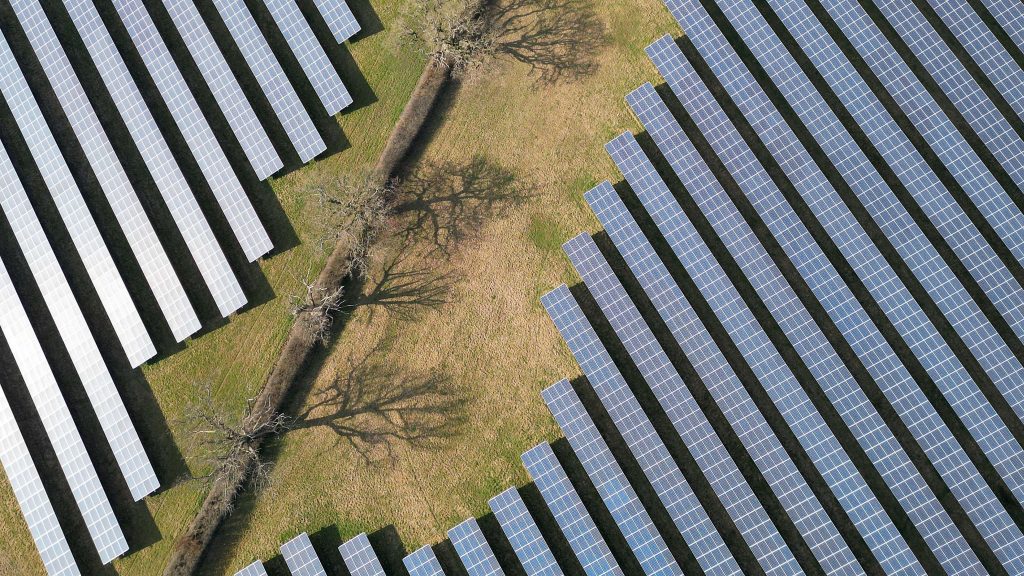Stock Pickers Power Up Battered Renewables As Rates Fall

Clean energy stocks might be in for a much-needed recharge this year as bets on interest rate cuts brighten their outlook following record outflows from this former ESG hot spot. Cost overruns, supply bottlenecks, and financing troubles have plagued debt-intensive wind and solar projects, but cheaper valuations are starting to lure investors looking to pick up bargains.
The iShares Global Clean Energy ETF, one of the world’s top renewables equity funds, has lost one-third of its value over the last year, whereas global stocks are up 16%. “Renewables have regained valuations that are definitely more attractive, even in the medium term,” said Gilles Guibout, head of European equity strategy at AXA Investment Partners.
“We see there’s growth, and now that rates have peaked, it’s a segment that can be interesting. Returns won’t be huge but are visible from businesses that are well managed,” Guibout said. Guibout said he could round up his existing renewables exposure “here and there” without revolutionising portfolios.
Big U.S. contract awards in December, which should allow Vestas Wind to unveil record quarterly intake when it releases results next week, have fueled some optimism following project cancellations last year. Other investors were also upbeat, based on the industry’s secular growth prospects and the expectation that interest rates will fall.
Speaking from Davos, Switzerland earlier this month, the CEO of Norway’s $1.5 trillion sovereign fund told Reuters he wouldn’t be surprised to see a comeback for some renewables’ valuations.
Nordea strategist Hertta Alava in Helsinki sees a better year ahead for renewable stocks, but said political support and faster permitting were needed to meet COP28’s commitments.
“We see investments accelerating, and that should also benefit clean energy stocks,” she said.
The MSCI Global Alternative Index trades at a 21% discount to its 12-year average valuation, per LSEG data.
TRUMPING RENEWABLES Yet, the road to regaining market confidence remains rocky. There is concern that if Donald Trump wins the U.S. presidential election this November, he may repeal the Inflation Reduction Act (IRA), which could put renewable investments in the United States at risk. Jefferies said such a reversal was unlikely. It expects a Trump administration to prioritise tax cuts instead, not least because some Republican supporters want to keep the IRA credits.
Over in Germany, investors are on tenterhooks, too. Delays to promised government funding for the industry might force solar panel maker Meyer Burger to close its loss-making German plant unless Berlin delivers. Given the uncertainties, portfolio managers such as Andrea Scauri at Luxembourg-based Lemanik are steering clear. “There are still plenty of write-downs in those balance sheets that haven’t been done. Possible major one-offs might need companies to recapitalise,” he said.
However, Scauri pointed out that mergers and acquisitions could make renewables more interesting. Orsted is facing questions over the need for a capital raise, and German media reported that power producer RWE had explored a combination. The Danish wind project developer might offer clues when it reports earnings on Wednesday next week. Vestas will also report final results that day, along with Siemens Energy. In December, renewables equity funds logged an eighth month of outflows, with fourth-quarter outflows reaching a record $2.5 billion, according to Lipper.
NEW YEAR PARTY But there are ways to gain less risky exposure. Diversified funds exposed to energy efficiency businesses could be an option, Nordea’s Alava said. Guibout said investors might look at grid operators, such as Italy’s Terna and Spain’s Iberdrola, whose regulated business is less volatile than pure plays. Most investors seem to agree that clean energy stocks’ high sensitivity to interest rates makes them a good way to tactically bet on the Federal Reserve’s future moves.
The sector rallied from the end of December to early January as rates tumbled, but central bankers pushing back on overly optimistic rate cut expectations have prompted profit-taking. A Bank of America survey of fund managers with $589 billion in assets named renewables and biotech as top beneficiaries of U.S. rate cuts.
(Reporting by Danilo Masoni; additional reporting by Dhara Ranasinghe in London; Editing by Amanda Cooper and Bernadette Baum)




